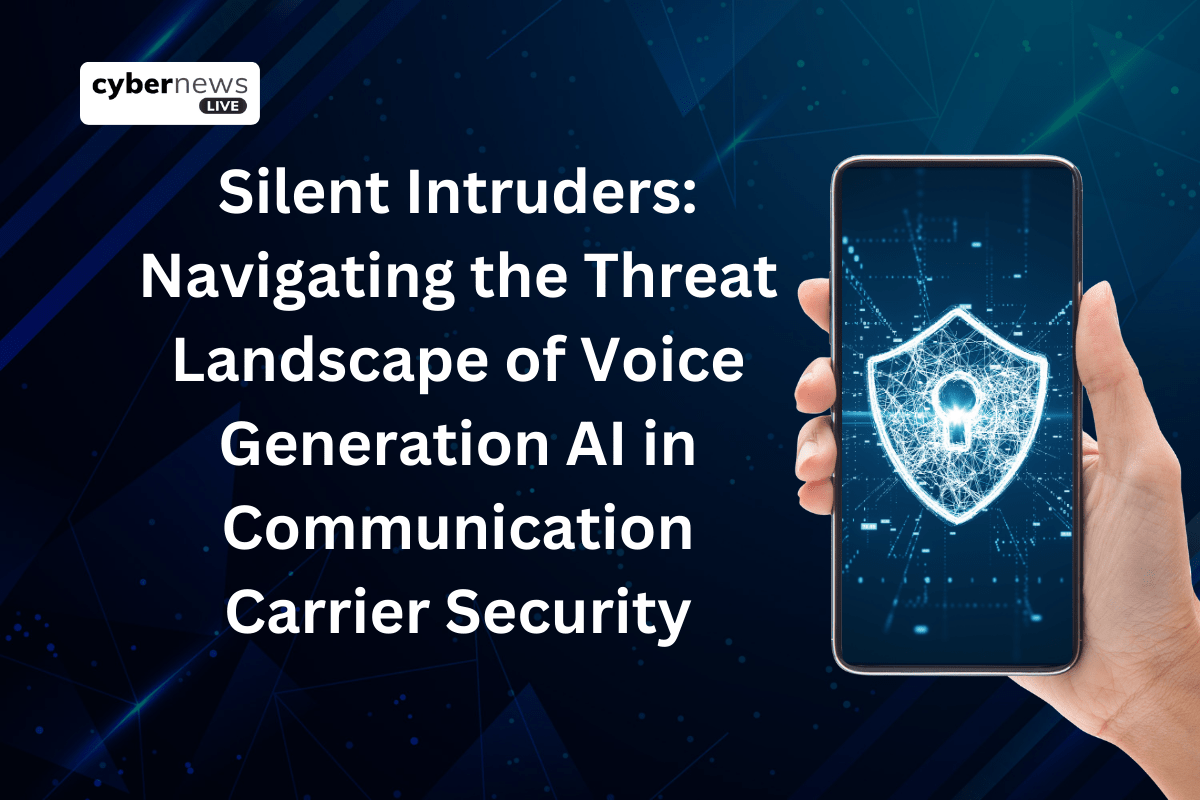
Silent Intruders: Navigating the Threat Landscape of Voice Generation AI in Communication Carrier Security
Vishing attacks, especially voice phishing, have increased by 47.2% in 2022, putting the world at serious risk. Advanced technologies that increase the capability of attackers, such as Voice Generation AI, are driving this rise. Vishing is the practice of social engineering over the phone to get private information, such as bank account information. Such attacks are becoming more common, even in the healthcare industry, which calls for stronger cyber security. Despite their popularity, voice-activated technologies pose difficulties in the fight against deepfake vishing. While telecom firms are working on methods to identify deepfake audio samples, users must remain vigilant. We recommend using alternate methods to confirm unexpected requests, be wary of calls asking for login credentials, and notify security of any suspicious activity. There are multiple ways that one can learn to keep oneself away from such scams and frauds, but we recommend keep yourself informed, updated and aware of such matters.
Voice-based cyber attacks have caused havoc worldwide for a very long time. With very little work required other than locating phone number lists to contact, they are a low-effort, big-reward attack that can be escalated to extremely high levels. This contributes to the 47.2% rise in vishing assaults and AI Threats that have occurred in 2022. Not to mention the current significant advancements in deepfake and artificial intelligence, these statistics could be even higher…
Vishing assaults have been seen to be a very simple scam to avoid since they first started occurring. They used to only be made with simple robocall software, which had a choppy, artificial conversation that was obvious to hear. However, the modern software in use can produce phoney voice messages that are nearly imperceptible.
What is Vishing?
One kind of social engineering assault that takes place over the phone is called vishing. Callers attempt to obtain your personal information so they can commit another crime. Getting access to your bank account is frequently the aim. Callers who use vishing attacks try to get you to interact by appealing to societal norms and expectations. For example, they can pose as representatives of your bank, the tax department, the police, or the government. You may feel obligated to answer the phone when someone you trust calls, or you may be anxious or inquisitive.
Vishing perpetrators frequently utilise psychological tricks and threats over the phone to make you believe you’re in danger. They’ll frequently claim that the only way out of a difficult situation is to divulge your personal information. Another popular vishing technique involves attackers leaving menacing voicemails.
Rise of Vishing
The majority of us are all too acquainted with vishing, the fraudulent phone calls that promise to pay off your credit card debt, prolong your car warranty, encourage you to donate to some noble cause you’ve never heard of, get you approved for insurance you didn’t know you could obtain, and so on. The US Health Sector Cybersecurity Coordination Centre (HC3) issued a warning on Friday, stating that the healthcare centre should take extra precautions as vishing is becoming more common. The practice of eliciting information or attempting to influence action via the telephone is known as voice phishing, also known as vishing, according to the Centre.
HC3 has observed a significant rise in these attacks in all sectors over the last 12 months. Social engineering tactics are still effective at getting first access into target organisations, thus the Health Promoting Hospital industry needs to keep a watchful eye on this changing threat landscape and prioritise user awareness training. Furthermore, not just credulous people are falling for the vishing.
The Implications of Vishing
Vishing-related data breaches invariably have catastrophic knock-on effects throughout the industry they target. It’s virtually always finance in this instance. The banking sector is particularly vulnerable since even a well-managed cyberattack can result in lost business and mistrust from customers. However, voice-activated services are highly practical and frequently well-liked by both clients and staff.
Therefore, it is unlikely that removing these characteristics will be the main solution to the growing problem of deepfake vishing. The victims’ readiness isn’t the only aspect of the issue like AI threats. The detection of deepfake audio samples is a topic of research for telecom companies. Eventually, these steps should cut the call when a deepfake is detected, serving as a first line of defence.
Ways to Avoid Being Vished
– Verify a call’s unexpected requests in methods unrelated to the one you are receiving. For instance, call the company’s main office using an official directory and a different phone, and request to speak with the caller.
– Any caller who requests your login credentials over the phone should be treated with extreme suspicion.
– Refuse to give account information or personally identifiable information to a caller, and report the contact to security if they do.
– You won’t get a call from security asking you to adjust your network settings, passwords, or logins. This kind of request from a caller is most likely the work of a scammer. Inform security and decline the request.
CTA
AI Threats to communication carriers in the rapidly evolving field of cybersecurity is Voice Generation AI. Realistic synthetic voices are made possible by this technology, which makes voice-based attacks more likely. Cyber News Live provides you with all the updates regarding cyber security and cyber theft.




